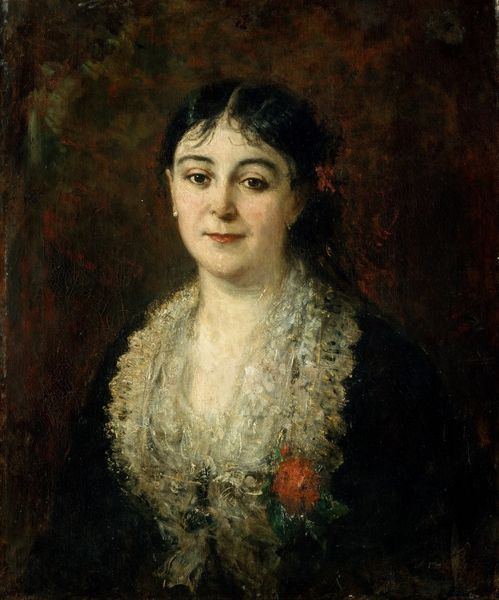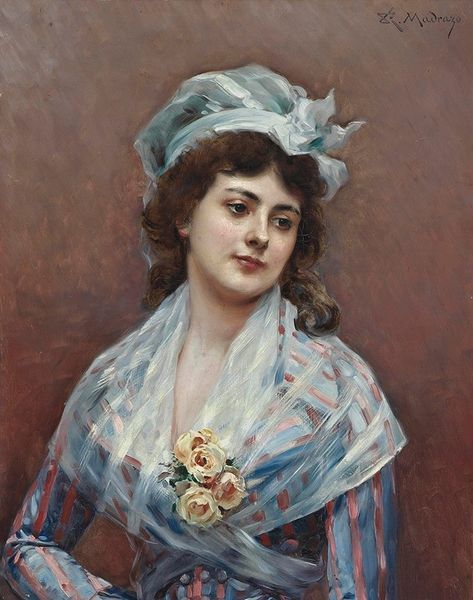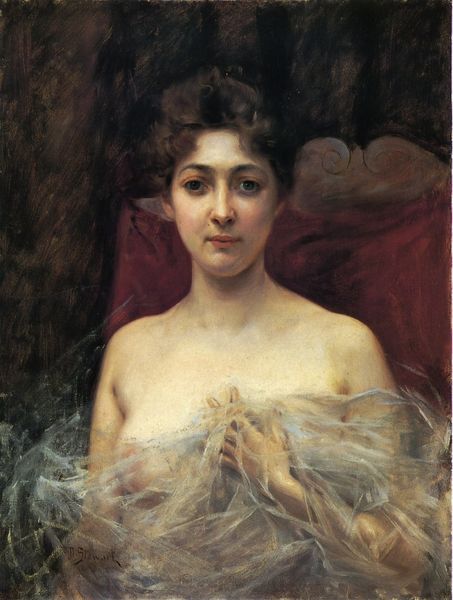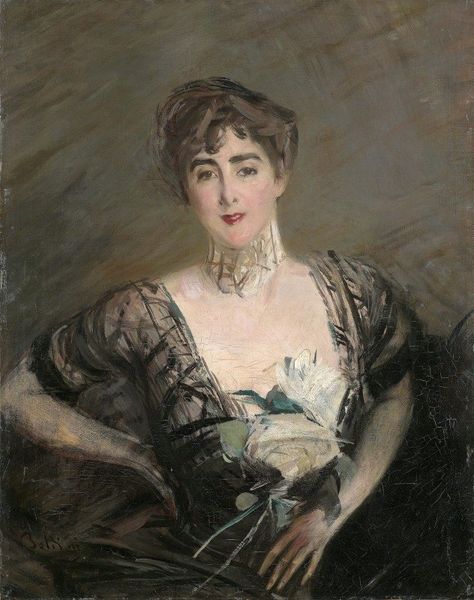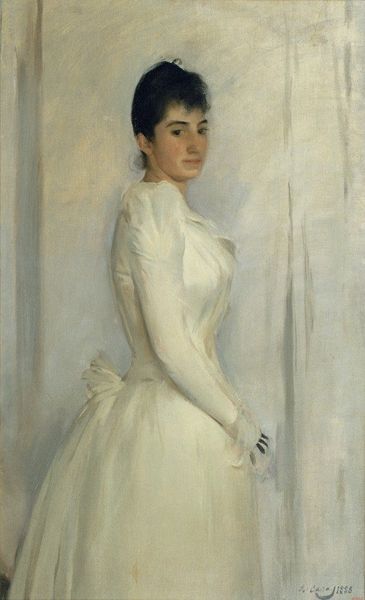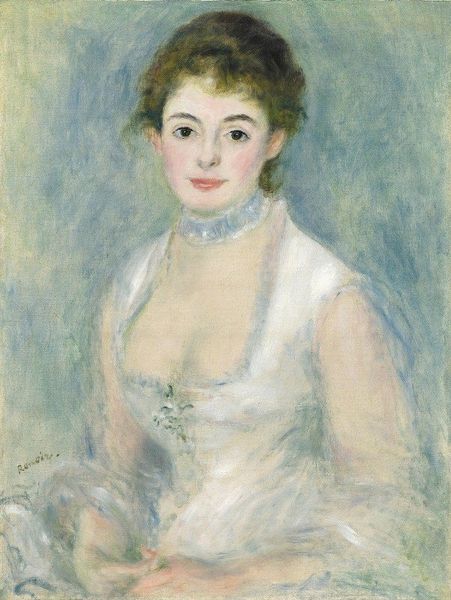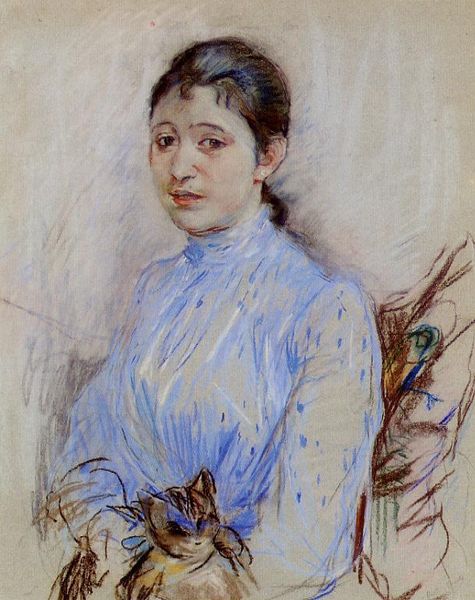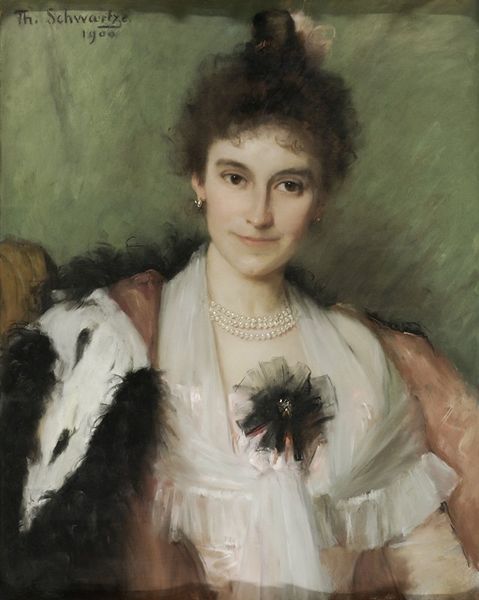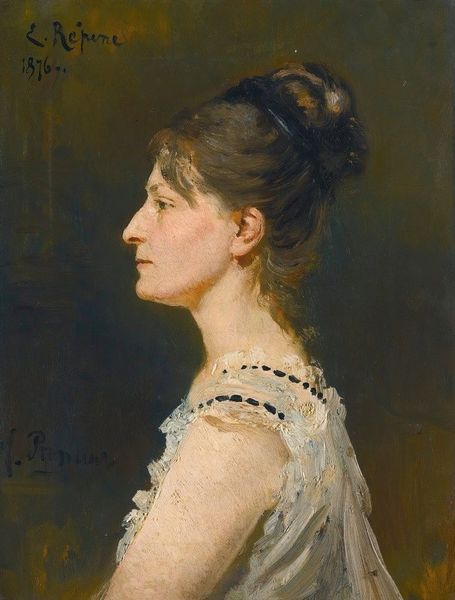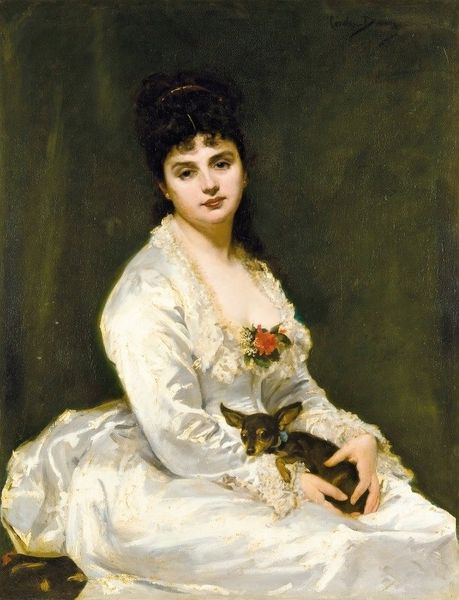
Dimensions: 50.8 x 40.64 cm
Copyright: Public domain
Editor: This is William Merritt Chase’s "Portrait of Mrs. William Chase," from 1900. It’s a painting, and it feels very intimate and delicate. The brushstrokes seem quick, almost fleeting. What strikes you when you look at it? Curator: What immediately grabs me is how Chase depicts Mrs. Chase's clothing and jewelry, because they point to a system of value. Consider the labor required to produce her pearls and the lace trim, and the resources funneled to afford these luxuries in 1900. How does that materiality affect your understanding of the work? Editor: It definitely places her within a certain social class, doesn’t it? Almost like the painting is subtly showcasing wealth, through the evidence of production... How would the experience of *making* this portrait tie in, the time and skill of the artist to render all those textures, against the quick brushwork? Curator: Precisely. The swift strokes belie the considered composition. Notice how Chase contrasts the softness of her dress against the relatively stark background; even the sitter's gaze, directed away from us, participates in this dance of access and distance. That suggests a particular mode of consumption. She isn’t performing for us, but displaying her affluence, her being-painted solidifies her position. Do you agree? Editor: I see what you mean. There's a story being told through those deliberate, material choices. So it’s not just about aesthetics, but about social dynamics captured in paint and pearls. Curator: Exactly! Examining the raw materials—pigments, canvas, Mrs. Chase’s garments—reveals much more about the economic structures inherent to even the most seemingly straightforward portrait. It encourages us to think beyond formal aesthetics. Editor: That’s a very insightful perspective! I'll never look at portraits quite the same way again. It's exciting to see how materials become cultural markers.
Comments
No comments
Be the first to comment and join the conversation on the ultimate creative platform.
